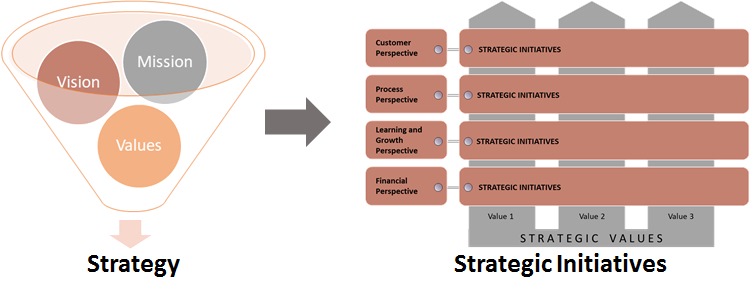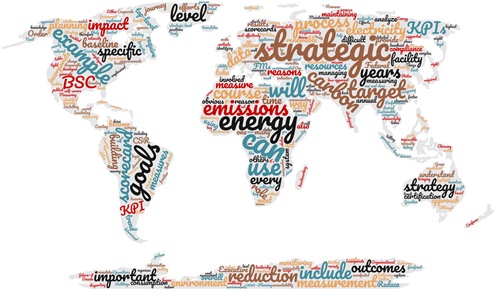February 2018
Sustainability is not a “one-and-done” venture, but a journey that should invite continual improvement. Successfully implementing and maintaining sustainability initiatives can be a difficult process as there are many moving parts, such as determining which metrics to track, identifying ownership roles, deciding what data to capture and trend, and making time to analyze performance outcomes. Through the chaos of managing critical performance elements involved in operations, sustainability initiatives are all-too-often forgotten.
Facility Managers (FMs) are involved in carrying out sustainability initiatives because of their role in overseeing or managing operations. FMs can be limited in their ability to change organizational strategy alone; therefore, it is important for sustainability initiatives to be developed at the highest level and trickled down throughout every department in the organization. Success will be manifested not only by bringing sustainability to the table, but by witnessing the true benefit of initiatives through measuring and monitoring efforts and outcomes over time.
The process of successfully implementing sustainability initiatives starts with top-level strategy of the entire organization to identify the desired outcomes. Efforts to become more sustainable are best supported with accountability and motivation.
Why are sustainability initiatives important at the strategic level?
Some reasons why it is important to take a strategic approach to sustainability initiatives are more obvious than others. Federal mandates and building certifications are some of the more apparent reasons. For example, under Executive Order 13693–Planning for Federal Sustainability in the Next Decade, federal facilities are required to engage in a variety of performance measurement methods to meet specific goals. The intent of the mandate is to have federal facilities act as environmental stewards and lead by example, putting sustainability at the forefront of strategic planning. Some methods to promote building energy conservation and management under this mandate include:
- Implement energy performance assessment technology
- Report performance data to ENERGY STAR
- Incorporate data into Green Button data access system
- Conform to city energy performance benchmarking
Each of these methods require agencies to understand their performance and measure and trend outcomes. However, measurement of their performance will be nearly impossible if the initiatives are not cultivated with strategy.
Another obvious reason to incorporate sustainability efforts into strategic planning is the maintenance and status of building certifications. Achieving or maintaining a sustainable facility certification has specific requirements. For example, the LEED v4 certification for Operations and Maintenance of Existing Buildings requires measurement and monitoring of indoor water use, energy and waste.
There are also less-apparent reasons to incorporate sustainability into strategic planning. These include a focus on Corporate Social Responsibility (CSR) as well as internal goals and objectives. CSR is a leadership approach to stewardship of the environment and social wellbeing that can include specific measures relating to sustainability. Other internal goals for sustainability can drive initiatives whether it be to act as a leader in sustainability or to utilize resources cost-effectively. Either way, the mission, vision and values of the organization should be the drivers for strategic sustainability initiatives.
Where does sustainability fit in the balanced scorecard?
It is much more likely that organizations will see results throughout every level of the organization if the initiatives are strategized by top-level management. Organizational goals and initiatives should not be kept secret, but should be familiar to employees at all levels and in all positions. One way to develop a framework for implementing strategic initiatives at every level of the organization is by using a balanced scorecard (BSC)[1], a performance measurement system that translates strategy into action. The contents of the BSC should be determined based on the strategic initiatives identified for the overall organization.
As mentioned in Sustainable Facility Management Reporting — Choosing the Right Things to Measure[2], it can be difficult to identify the right performance measures. Performance measures include management and process metrics and key performance indicators (KPIs). Although each type of measure has a role in trending improvement, balanced scorecards at the organizational level should be comprised of the most important strategic-level metrics, or KPIs.
For some organizations, a sustainability KPI can be as simple as “number of sustainability goals met” while others will require more specific metrics to match complex initiatives. Following the Executive Order’s example, if a federal facility determines a target reduction of 20% carbon emissions over the course of 25 years, a telling KPI would be “annual percent reduction of carbon emissions in compliance with target”. This metric would help the organization understand its performance and maintain compliance with the mandate.
When an organization has an understanding of its use of resources, it has a better understanding of what it takes to continue operations and improve over time. Whether it be driven by regulation or internal goals, each organization should consider including 1-2 sustainability KPIs in their BSC. This will allow the organization to perform to its goals.
How can sustainability scorecards provide a more detailed picture of performance?
Management and process metrics are tactical and operational-level metrics that provide managers and supervisors information to optimize facilities performance. These are the types of sustainability metrics that belong on a sustainability scorecard.
With the goal to meet a target reduction of 20% carbon emissions over the course of 25 years, there are many variables that factor into the KPI of “annual percent reduction of carbon emissions”. This could include measuring the use of renewable energy, natural gas consumption, gasoline and electricity. In this example, the metrics being reported in the sustainability scorecard would roll up into the KPIs reported on the BSC.
Trending management and process metrics can highlight opportunities for improvement. For example, being able to analyze the consumption of electricity might suggest areas for improvement in the overall reduction of carbon emissions. Installing occupancy sensors or communicating with staff about the importance of turning off appliances is one way to reduce electricity and make an impact on carbon emissions.
It should be emphasized that every person in the organization plays a role in the journey to sustainability. For this reason, it can also be beneficial to publish the results of the scorecard within the organization.
Measuring sustainability metrics allow organizations to be self-aware of their impact on the environment. When running a tight budget, you reassess what is truly a necessity and begin to limit luxuries to keep expenses down. Just like in a budget, when you measure your impact on the environment you become more aware of opportunities to cut back and generate improvements to organizational performance. A sustainable FM organization is one that knows what resources it is using and the impact it will have on the future—it then uses this knowledge to implement a strategic structure with purpose.
 Stephen Clawson, FMP is a Staff Professional at Facility Engineering Associates, P.C (FEA). He is a graduate of Brigham Young University where he majored in Construction and Facilities Management. Stephen has always had a curiosity and respect for the built environment. His experience at FEA has exposed him to high-performance FM principles, and has broadened his perspective of the FM industry.
Stephen Clawson, FMP is a Staff Professional at Facility Engineering Associates, P.C (FEA). He is a graduate of Brigham Young University where he majored in Construction and Facilities Management. Stephen has always had a curiosity and respect for the built environment. His experience at FEA has exposed him to high-performance FM principles, and has broadened his perspective of the FM industry.
 Dorothy Scholnick, FMP is a Staff Professional at Facility Engineering Associates. She has a background in facilities management from Temple University and works under the facility consulting services line that specializes in facility asset management, building energy management, and sustainability services.
Dorothy Scholnick, FMP is a Staff Professional at Facility Engineering Associates. She has a background in facilities management from Temple University and works under the facility consulting services line that specializes in facility asset management, building energy management, and sustainability services.
[1] Kaplan, Robert S., and David P. Norton. The Balanced Scorecard: Translating Strategy into Action. Boston: Harvard Business School Press, 1996.
[2] http://fmlink.com/articles/sustainable-facility-management-reporting-choosing-the-right-things-to-measure-2/




